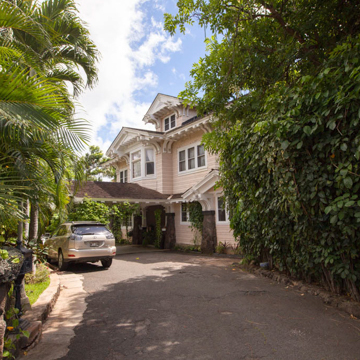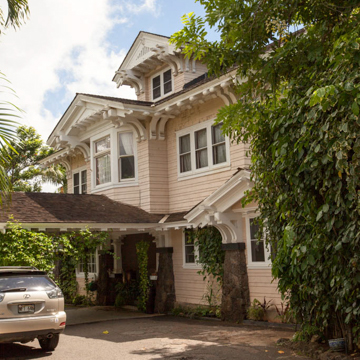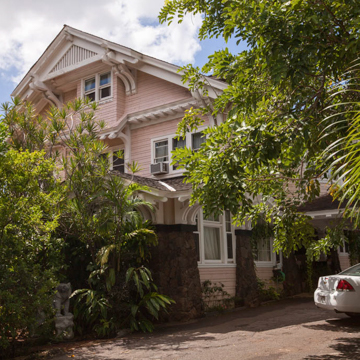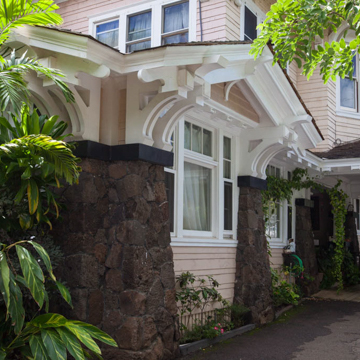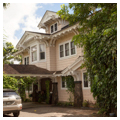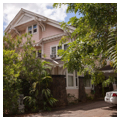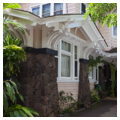You are here
Manoa Valley Inn (John Guild House)
A major remodeling of an earlier, more diminutive house led to this bold, distinctive, and dynamic composition. With its heavy bracketing, pronounced eaves, and projecting bay windows, the house draws the eye upward via a series of three receding gables, commencing with the porte-cochere and concluding with the centered rooftop dormer. Single-story, corner pavilions balance the facade, while battered lava-rock piers and shingle siding work to ground the building in a picturesque Arts and Crafts tradition. A lava-rock-pillared lanai runs across the rear of the house, providing a platform from which to view Waikiki, the ocean, and magnificent sunsets. Three sets of French doors access the lanai from the entrance hall, living room, and dining room. The four corner pavilions are departures from early-twentieth-century residential planning, and served as sunrooms in the front and a fernery and a kitchen service area in the rear. The house was restored in 1981 and is now a bed-and-breakfast. Its lava-rock chimney collapsed in the earthquake of 2006, but has been rebuilt.
Writing Credits
If SAH Archipedia has been useful to you, please consider supporting it.
SAH Archipedia tells the story of the United States through its buildings, landscapes, and cities. This freely available resource empowers the public with authoritative knowledge that deepens their understanding and appreciation of the built environment. But the Society of Architectural Historians, which created SAH Archipedia with University of Virginia Press, needs your support to maintain the high-caliber research, writing, photography, cartography, editing, design, and programming that make SAH Archipedia a trusted online resource available to all who value the history of place, heritage tourism, and learning.


